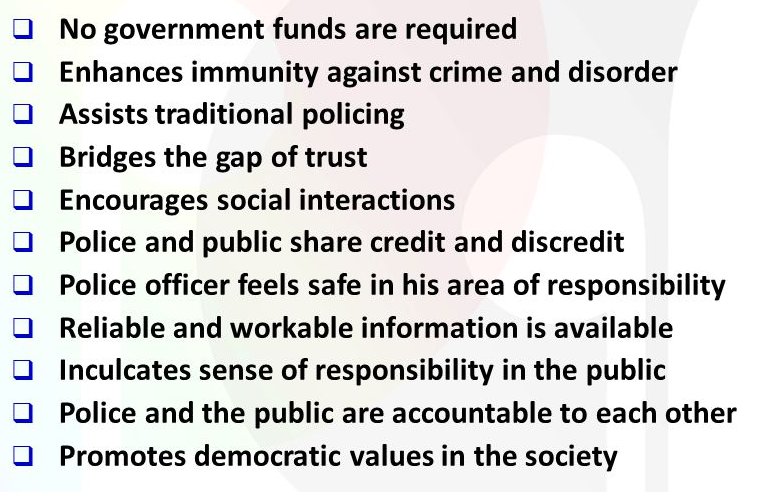Community Policing | 19 Aug 2021
Why in News
Recently, the Delhi Police Commissioner inaugurated a Community Policing Programme ‘Ummeed’.
Key Points
- About:
- The Basic Principle Underlying Community Policing is that ‘A Policeman is a Citizen with Uniform and a Citizen is a Policeman without Uniform’.
- The essence of Community Policing is to minimize the gap between policemen and citizens to such an extent that the policemen become an integrated part of the community they serve.
- It is defined as a law enforcement philosophy that allows police to continuously operate in the same area in order to create a stronger bond with the citizens living and working in that area.
- It helps in reducing the trust deficit between police and public as it requires the police to work with the community for prevention and detection of crime, maintenance of public order, and resolving local conflicts, with the objective of providing a better quality of life and sense of security.
- The Basic Principle Underlying Community Policing is that ‘A Policeman is a Citizen with Uniform and a Citizen is a Policeman without Uniform’.
- Benefits:
- Challenges:
- Poor public image of the police force.
- Poor customer service procedures within the police force.
- It might lead to vigilantism and mob justice.
- Belief by the residents that crime is a source of livelihood for some people.
- Other Examples:
- Janamaithri Suraksha Project: Kerala
- Joint Patrolling Committees: Rajasthan
- Meira Paibi: Manipur
- Community Policing Project: West Bengal
- Maithri: Andhra Pradesh
- Mohalla Committees: Maharashtra
- Friends of Police: Tamil Nadu
Way Forward
- Any volunteers under the Community Policing should be allowed to help police, but not to take the role of police. The criminal background of the volunteers must be checked before their deployment.
- Community policing is a philosophy, not a program. If the philosophy of community policing is not understood by all of those that are involved, then the programs will not succeed.
- The biggest obstacle that community policing and the community-based programs have to face is the idea of change. Officers have to change the concept of policing and citizens have to be willing to accept that change.

